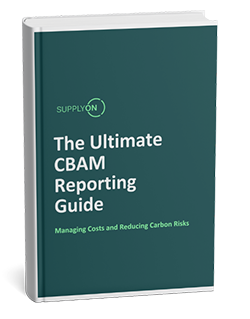
The European Union (EU) set out ambitious climate goals like reducing greenhouse gas emissions by at least 55% by 2030 and to achieve climate neutrality by 2050. Central to this effort are the EU Emissions Trading System (EU ETS) and the Carbon Border Adjustment Mechanism (CBAM). Both instruments are designed to reduce carbon emissions while maintaining the competitiveness of EU industries. The phase-out of free EU ETS certificates and the introduction of CBAM certificates represent a significant shift in the EU’s approach to carbon pricing, with implications for both EU and non-EU producers.
Introduction to CBAM and EU ETS
The EU ETS is a cornerstone of the EU’s climate policy, operating as a cap-and-trade system that sets a limit on the total amount of greenhouse gases that can be emitted by covered sectors. Companies receive or purchase emission allowances, which they can trade with one another. Over time, the cap is reduced, driving overall emissions down.
The CBAM, on the other hand, is a new mechanism designed to address the risk of carbon leakage—where companies move production to countries with less stringent climate policies or where EU products are replaced by more carbon-intensive imports. CBAM ensures that imported goods into the EU are subject to the same carbon pricing as goods produced within the EU, thereby leveling the playing field and incentivizing global emissions reductions. To ensure this, companies that import CBAM goods into the EU will have to purchase CBAM certificates for the imported embedded emissions starting in 2026. CBAM currently covers seven carbon-intensive sectors. More will follow over time.
Free EU ETS Certificates and the Introduction of CBAM Certificates
Under the current EU ETS, certain industries receive a portion of their carbon allowances for free. This system of free allocation was introduced to protect energy-intensive industries from carbon leakage, reducing the risk that these industries would relocate production outside the EU to avoid carbon costs. However, as the EU intensifies its climate goals, the free allocation of allowances is increasingly seen as incompatible with the need for a robust and fair carbon pricing system.
Therefore, CBAM certificates will replace free EU ETS certificates as the EU shifts towards a more stringent carbon pricing mechanism. By requiring importers to purchase CBAM certificates equivalent to the carbon price that would have been paid had the goods been produced under the EU ETS, the CBAM ensures that non-EU producers are subject to the same carbon costs as EU producers. This move not only reinforces the EU’s climate objectives but also encourages global industries to decarbonize, as they face the prospect of increased costs for exporting carbon-intensive goods to the EU.
Timeline for the Phase-Out of Free EU ETS Certificates
The phase-out of free EU ETS certificates is scheduled to occur gradually, starting with the introduction of CBAM in its definitive phase form 2026 on. From 2026 to 2034, free allowances will be progressively reduced, with a corresponding increase in the number of CBAM certificates required for imports (see picture). This gradual phase-out is designed to give EU industries time to adapt to the new carbon pricing environment while avoiding sudden cost increases that could undermine their competitiveness.

During this phase out period, the EU will carefully monitor the impact of the phase-out and the effectiveness of CBAM in preventing carbon leakage. The European Commission has also committed to reviewing the phase-out timeline and the implementation of CBAM, making adjustments as necessary to ensure that both mechanisms effectively support the EU’s climate goals.
Implications for EU and Non-EU Producers
The phase-out of free EU ETS certificates and the introduction of CBAM certificates have significant implications for both EU and non-EU producers.
In the first few years of the phase-out, the proportion of free certificates is still high, therefore not so many CBAM certificates need to be purchased. This changes quickly after 2029, increasing the financial impact. This transitional phase is designed to ease the shift for EU industries, allowing them to gradually adapt to the increased carbon pricing.
As the phase-out progresses and free allowances diminish, EU producers will see their carbon costs rise. This increase in costs will incentivize them to invest in cleaner technologies and reduce their carbon footprint, aligning with the EU’s broader climate goals. The gradual reduction in free allowances ensures that EU producers have time to adjust, but it also means that they must prepare for a future where they compete on equal footing with non-EU producers in terms of carbon costs.
For non-EU producers, CBAM represents a new cost for exporting goods to the EU. To remain competitive, these producers will need to reduce the carbon intensity of their production processes or face higher costs associated with CBAM certificates. This creates a strong incentive for global industries to adopt more sustainable practices, contributing to the EU’s efforts to drive global emissions reductions.
Conclusion
The phase-out of free EU ETS certificates and the introduction of CBAM certificates mark a significant evolution in the EU’s climate policy. By aligning carbon costs for both EU and non-EU producers, the EU is taking a step towards achieving its climate goals while maintaining the competitiveness of its industries. As this transition unfolds, it will be important for both EU and global producers to adapt to the new carbon pricing landscape, investing in innovation and sustainability to be successful in a low-carbon economy.



